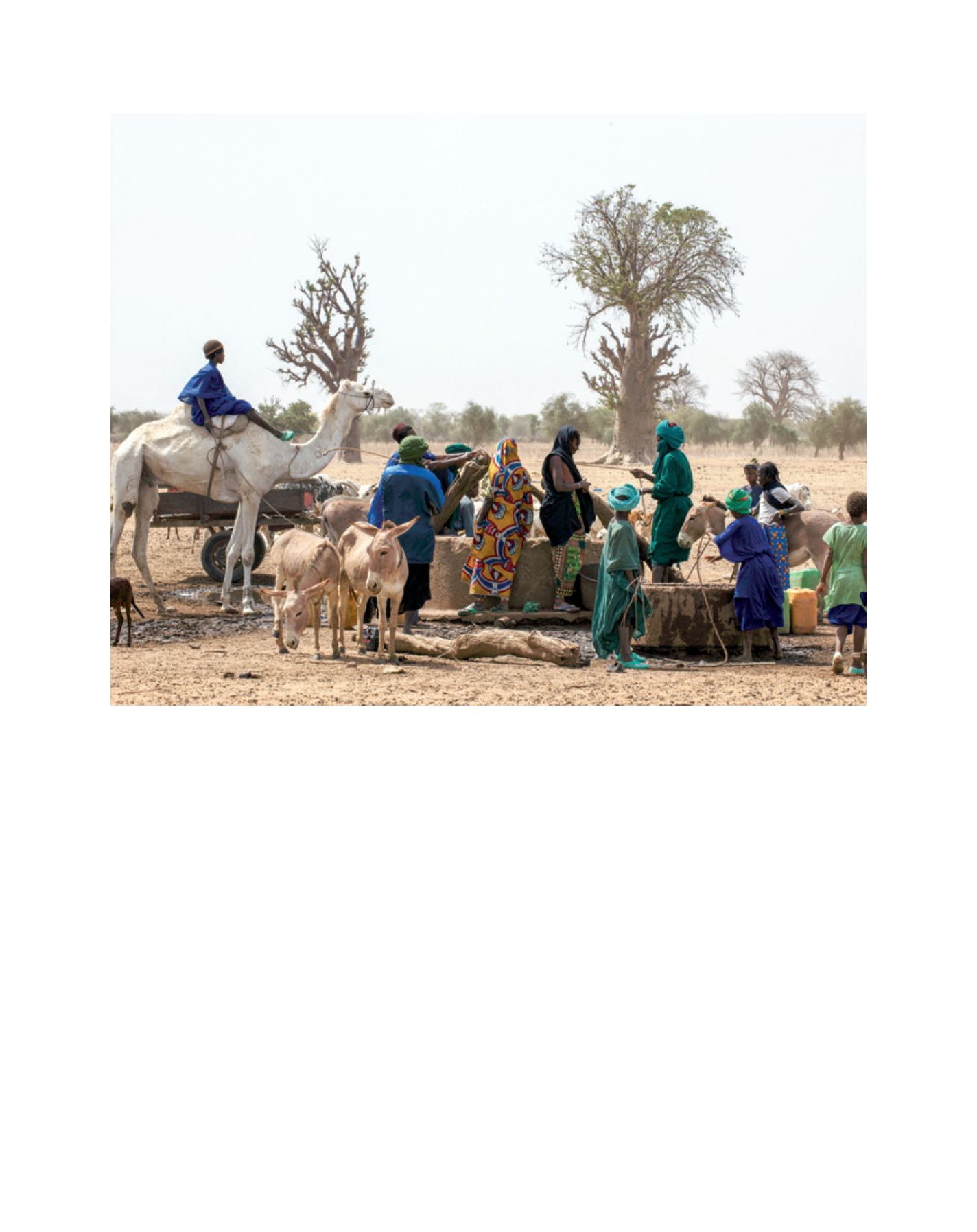

[
] 67
of Antsiranana. This project is an impressive example of
how combating desertification also contributes to climate
protection, biodiversity preservation — among other
things, by reducing the pressure on natural forests — and
rural development. To ensure that the impact of such inno-
vative approaches is as widespread as possible, German DC
is also carrying them over to other countries.
Desertification, climate variability and population growth
are drivers of poverty and resource degradation in Niger.
Competition for shrinking areas of fertile land is leading
to conflict and forcing local people to migrate. Through its
‘Promotion of productive agriculture’ programme, German
DC is providing support in reclaiming degraded land for agri-
culture, forestry and pasture farming. This involves retaining
and harnessing the fertility of floodplains threatened by soil
erosion through the construction of water-spreading weirs.
During the rainy season these constructions, similar to dams,
act to slow and spread the flow of rainwater through the
valleys and allow it to be used to irrigate a larger area of agri-
cultural land. Having greater control over the floodwaters
also helps to prevent soil erosion and replenish groundwater
reserves. Reclaiming degraded arable land and improving
irrigation enables higher crop yields to be achieved and thus
improves food security and the general economic situation
of the local population.
In the Piura region of northern Peru the local popula-
tion, associations and the regional government decided to
collectively tackle the problem of desertification which was
severely affecting the area. In the context of an Economics
of Land Degradation initiative study, the partners received
advice on integrating strategies of sustainable land manage-
ment and desertification control in development and public
budget plans. The results of the study showed that the
economic cost of soil loss amounts to approximately 14
per cent of agricultural gross domestic product, with a
total loss of around US$100 million. This strong argument
convinced all stakeholders to jointly develop innovative
approaches for the sustainable use and reforestation of
dry forests. This was the significant motivation behind the
Peruvian Government’s decision to introduce a mechanism
for payments for ecosystem services into national legisla-
tion in 2014.
Cooperation projects help to enable food security, rural development, watershed management, preservation of ecosystem services, and climate change
mitigation and adaptation
Image: Michael Martin
L
iving
L
and
















